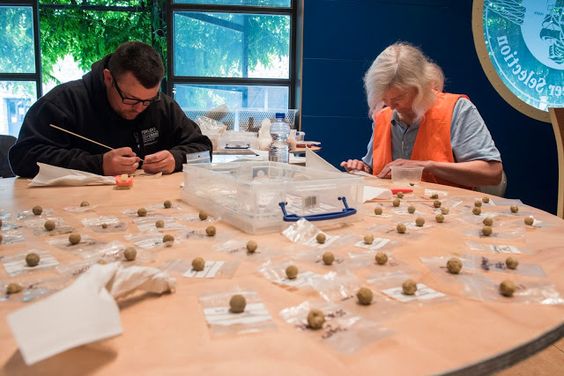After a limb is amputated in a hospital, it is typically treated as medical waste. Hospitals have specific protocols and regulations for the disposal of amputated limbs and other biomedical waste to ensure proper sanitation and prevent the spread of infections.
The exact process may vary depending on local regulations and hospital policies, but generally, amputated limbs are placed in biohazard bags or containers labeled for biomedical waste. Once collected, biomedical waste is often incinerated or disposed of through other approved methods that meet health and environmental standards.
Amputated Limbs
The removal of a limb, whether due to traumatic injury, disease, or surgical necessity, represents a significant event in a person’s life. Amputations are conducted as a last resort when limb preservation is not feasible or poses a risk to the individual’s health. Read about How Long Do Hospitals Keep Medical Records
Reasons for Amputation
Traumatic Injuries
Trauma resulting from accidents, warfare, or natural disasters can lead to severe limb damage, necessitating amputation. In such cases, immediate medical intervention is crucial to save the patient’s life and prevent further complications.

Disease Complications
Certain medical conditions such as diabetes, vascular disease, and cancer may lead to reduced blood circulation or tissue damage, requiring surgical removal of the affected limb to prevent the spread of infection or alleviate pain.
Ethical Considerations
The handling and disposal of amputated limbs raise ethical concerns regarding patient dignity, privacy, and autonomy. Healthcare providers must uphold ethical standards and respect patients’ rights throughout the treatment process.
Legal Regulations Regarding Amputated Limbs
Various legal regulations govern the handling, storage, and disposal of amputated limbs to ensure compliance with medical standards and patient confidentiality. Healthcare institutions must adhere to these regulations to maintain ethical practices and protect patient rights. Discover about How Many Jobs are Available in Major Pharmaceuticals
Handling and Storage of Amputated Limbs
Hospitals employ stringent protocols for the handling and storage of amputated limbs to prevent contamination, maintain tissue integrity, and facilitate accurate diagnosis and treatment planning.
Disposal Methods for Amputated Limbs
Incineration
Incineration is a common method for the disposal of biomedical waste, including amputated limbs. This process ensures complete destruction of organic material and minimizes the risk of environmental contamination or transmission of infectious diseases.
Burial
Some cultures and religious traditions mandate the burial of amputated limbs as a sign of respect for the deceased. Hospitals may accommodate these requests while adhering to regulatory guidelines and environmental considerations.
Donation for Medical Research and Education
Amputated limbs can serve as invaluable resources for medical research, education, and surgical training. With patient consent, hospitals may facilitate the donation of amputated limbs to accredited institutions for scientific advancement and innovation in healthcare.
Cultural Perspectives on Amputated Limbs
Cultural beliefs and customs influence attitudes towards amputated limbs, shaping perceptions of disability, healing, and acceptance within society. It is essential to recognize and respect diverse cultural perspectives while providing care and support to patients and their families.
Psychological Impact on Patients
The loss of a limb can have profound psychological effects on patients, including grief, depression, and adjustment difficulties. Healthcare professionals must address these emotional challenges through counseling, support groups, and holistic rehabilitation programs.
Rehabilitation and Prosthetic Use
Rehabilitation programs play a vital role in helping patients adapt to life with limb loss, regain independence, and achieve optimal functioning. Prosthetic devices offer mobility, functionality, and aesthetic restoration, empowering individuals to resume daily activities and pursue their goals.
Role of Hospitals in Amputation Procedures
Hospitals serve as centers of excellence for amputation procedures, providing comprehensive care from diagnosis to rehabilitation. Multidisciplinary teams collaborate to deliver personalized treatment plans tailored to each patient’s unique needs and goals.
Patient Consent and Communication
Effective communication and informed consent are essential components of the amputation process, fostering trust, respect, and shared decision-making between patients and healthcare providers. Open dialogue ensures that patients fully understand the risks, benefits, and alternatives to amputation.
Support Services for Patients and Families
Hospitals offer a range of support services to assist patients and their families throughout the amputation journey, including peer counseling, vocational rehabilitation, and community resources. These initiatives promote resilience, empowerment, and social inclusion for individuals living with limb loss.
Medical Advancements in Limb Regeneration
Recent advancements in regenerative medicine hold promise for limb regeneration and tissue engineering, offering hope for patients seeking alternative treatments to traditional amputation procedures. Ongoing research efforts aim to revolutionize limb reconstruction and enhance quality of life for individuals with limb deficiencies.

Addressing Misconceptions and Stigma
Stigma surrounding limb loss can perpetuate negative stereotypes and hinder social integration for affected individuals. Education, advocacy, and public awareness campaigns are essential for challenging misconceptions, promoting inclusivity, and fostering empathy within communities.
Conclusion
The management of amputated limbs encompasses a complex interplay of medical, ethical, cultural, and psychological factors. Hospitals play a pivotal role in ensuring compassionate care, ethical practices, and patient-centered support services for individuals facing limb loss.
FAQs
- Can patients choose what happens to their amputated limbs after surgery?
- Yes, patients have the right to make decisions regarding the disposal or donation of their amputated limbs, with appropriate guidance from healthcare providers.
- Are there any religious considerations regarding the handling of amputated limbs?
- Yes, some religious traditions advocate for specific burial rituals or ceremonies for amputated limbs, reflecting cultural beliefs and customs.
- How do hospitals ensure the privacy and confidentiality of patients with amputated limbs?
- Hospitals adhere to strict protocols and regulatory requirements to safeguard patient information and maintain confidentiality throughout the treatment process.
- What role do prosthetic devices play in the rehabilitation of patients with limb loss?
- Prosthetic devices help restore mobility, functionality, and aesthetics for individuals with limb loss, enabling them to lead active and independent lives.
- What opportunities exist for individuals interested in donating their amputated limbs for medical research?
- Hospitals may facilitate the donation of amputated limbs to accredited institutions engaged in scientific research, education, and innovation in healthcare.







